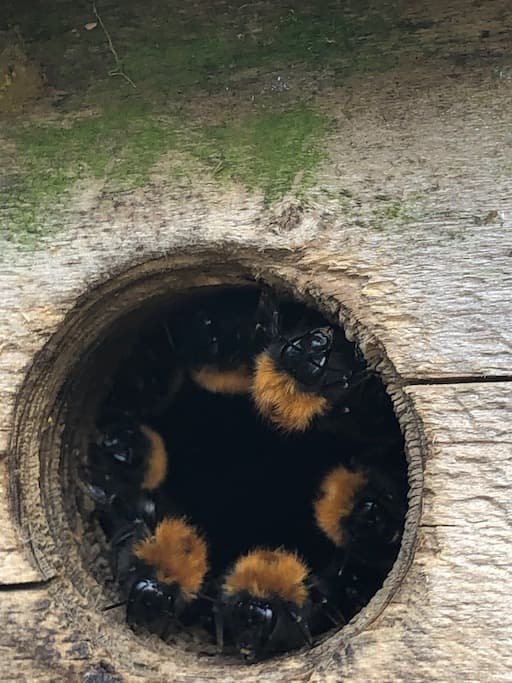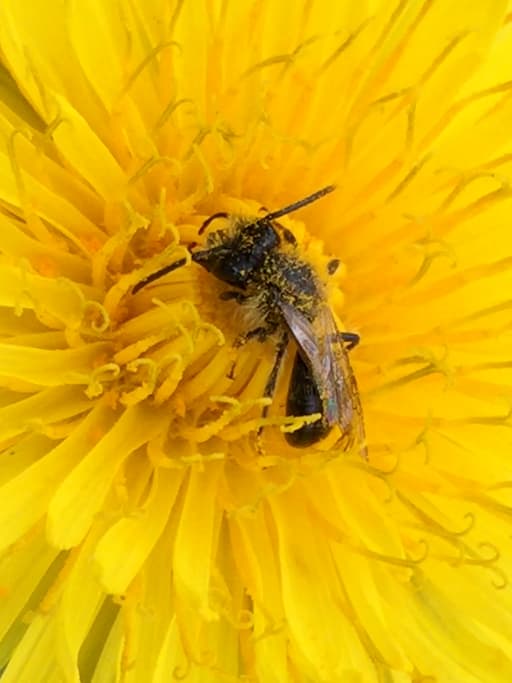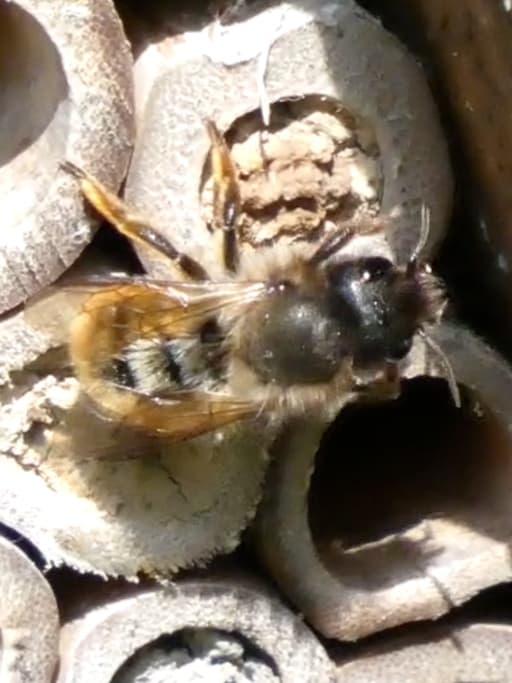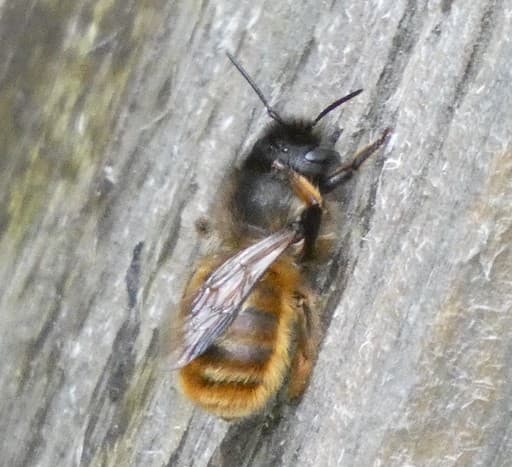Fuzzy and Buzzy-Bumblebees
The hum of a bumblebee’s wings zooming past makes Jock go all warm and fuzzy inside! Seeing these lovely creatures so busy with all their jobs is one of his favourite parts of spring! He doesn’t see as many of them these days as he used to - they're in trouble and need our help.
The Bumblebee Conservation Trust can tell us loads about them: The Bumblebee Lifecycle
Once the warmer spring days arrive the bumblebee queens who have been hibernating alone in the soil gradually wake up. They are really hungry as they will have used up all the fat they had stored for winter.
The first job for the queen bumblebee is to find food - feeding on the early spring flowers , and drinking their nectar gives her energy. These spring flowers like pussy willow, lungwort and gorse are really important as the queen tries to regain her strength.
Next on this busy bee’s to-do list is to find a suitable nest site. She has no time to chat to Jock as she busily zig-zags around his ankles looking for possible nest sites. Depending on what type of bumblebee she is, she might choose a nice hole in the ground, like an ld mouse nest or in a dry rock cavity, or under your garden shed, in tussocky grass, or she might even set up home in a bird box.
Most bumblebees nest underground, but some, like the carder bee will comb grass and moss together to make her nest. The tree bumblebee, quite a new species here, uses hollows in trees and even bird boxes!
Once she has found her ‘des res’ she collects pollen from flowers, bringing it back to her nest. Now she makes a mound from pollen and wax, which she produces from her body, and she lays her first brood of eggs in it. This is going to give the newly hatched larvae a food source.
She also uses this wax to make herself a wee pot to store nectar which she gathers from the flowers. She puts the pot in front of her mound. She keeps her eggs warm by sitting on her wax "nest" shivering her muscles to keep warm.
The queen incubates her eggs like this for several days, sipping her nectar to give her energy. Soon the tiny larvae emerge. Flying back and forth to the flowers, the queen feeds her larvae on nectar and pollen.
After around 2 weeks, the larvae spin a cocoon and gradually develop into adult bees. This first brood will all be female workers. Their job is to carry out the work of the nest - inside and out. They help the queen to grow the colony. They will clean the nest, guard it and collect nectar and pollen for the next batch of offspring.
Meanwhile, the queen is busy laying her next batch of eggs, and she will stay inside the nest from now on. A large colony can have 400 bees in it! In late summer, new queens( females) and males are produced, so the colony can reproduce. The males leave the nest, and it’s their job to try to mate. The new queens will mate soon after leaving the nest.
These mated new queens gorge themselves on nectar and pollen to build up their fat reserves for the coming winter hibernation. Only the new queens survive to the next spring in a sheltered spot, digging down about 10 cm-isn’t that incredible for a tiny bee!
Jock says:
Please don’t be afraid of bumblebees, leave them alone. Give them space to do their work.
They won’t sting unless they're frightened or are protecting their home.
Bumblebees are in trouble, mainly due to pesticides (chemicals which are sprayed on crops to kill pests) and loss of their habitats. They really matter to us as we need them to pollinate our crops. They need our help!
How you can you help bumblebees? Try some of the following suggestions...
- Gardening For Bumblebees
- Bee Friendly Plants And Flowers
- Plants for Bumblebees
- Bee-Friendly Plants For Every sSeason
- Build a bee!
For more information and to identify bumblebees try the following links:
- Spotlight on: Bumblebees in spring
- Spring bees: Which species are on the wing first?
- Gorse, or bee emergency food
- Bee Identification Guide (PDF)
- Scottish Moth Caterpillars by Habitat
Solitary Bees
The Wildlife Trusts can tell us loads about solitary bees: Solitary bees
Most folks are aware of bumblebees and honey bees, but did you know that of the 270 types of bees in the UK , 230 are solitary bees! These little guys are really important pollinators for us. Unlike bumblebees and honey bees who live in colonies, solitary bees tend to like to be alone, they don’t make honey.
Jock says: Solitary bees have tiny stingers and rarely sting.
Most of our solitary bees nest in the ground, tunnelling out their own nest. The female uses her body to dig out a nesting chamber, waterproofing it from a gland in her body. She adds pollen for the larva to eat, which she often moistens with nectar, and lays her egg. She seals off that section of the chamber, before adding a few more nest cells with an egg in each until the chamber is full. If they find an especially good nest site, like a warm south facing bank with sandy soil, several solitary bees might decide to nest there. The developing larvae eat the pollen, and after about 6 weeks spin a cocoon, pupate and eventually change into bees. The bee spends the rest of the summer and winter in the nest cell, waiting for spring, when it emerges to mate and continue the cycle.
Some species like to nest higher up, for example in old beetle holes, often sealing the nests with a saliva like substance, mud, chewed up leaves, tree resin, or parts of leaves which they have cut with their jaws. If you have made a bug hotel in your garden, you might well have some of these solitary bees nesting as guests!
One species, Ceratina Cyanea, digs out her nest in bramble stems, digging out the pith of the stem and laying her eggs there.
In Britain, we even have 3 species of solitary bee which like to nest in old snail shells! They use chewed up leaves to seal off each section of the empty nest shells, and often try to camouflage the shell in some way! Here’s a great fact sheet about bees: Urban Bees
For more information on solitary and other bees, especially those who visit bee hotels, visit the Wild bees of Scotland Identification Guide.
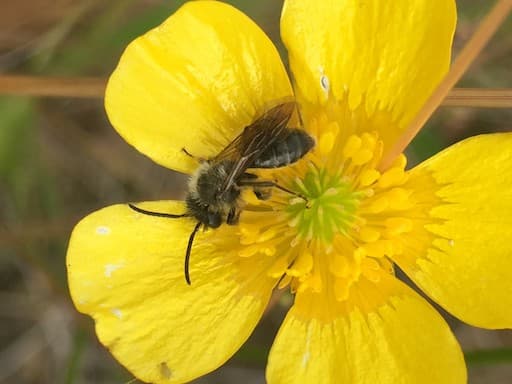
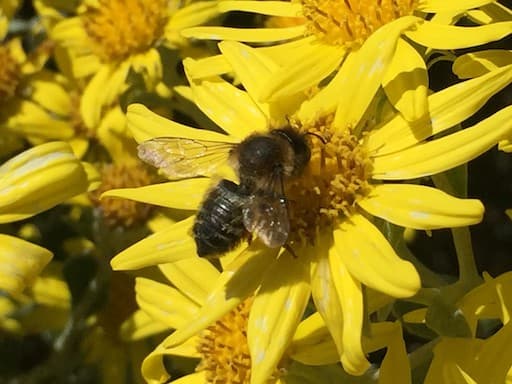
This is part of the Insects In Spring information.
